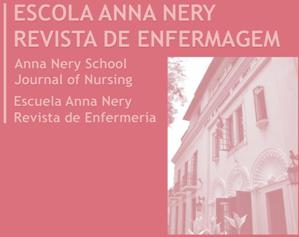|
Componentes do COM-B
|
O que precisa ocorrer para que o comportamento-alvo seja alcançado?
|
|
Competência física (habilidade física) |
· Disposição/ânimo e habilidade para seguir o padrão alimentar proposto
· Equipe de saúde suficiente e atualizada em diretrizes clínicas |
|
Competência psicológica (conhecimento, habilidades cognitivas e interpessoais, memória, atenção, processos de decisão, regulação comportamental) |
· Conhecimento sobre padrão alimentar proposto |
· Conhecimento sobre o papel dos alimentos no controle glicêmico
· Capacidade de planejar refeições de acordo com padrão alimentar proposto
· Capacidade de manter padrão alimentar proposto em eventos sociais (ex: reuniões, festas, restaurantes) |
|
Oportunidade física (contexto ambiental, recursos materiais) |
· Acesso a padrão alimentar proposto em casa e no trabalho
· Abordagem da equipe de saúde centrada no paciente |
|
Oportunidade social (cultura, influências sociais) |
· Apoio de familiares/amigos para seguir padrão alimentar proposto |
|
Motivação reflexiva (papel e identidade social, crenças na própria capacidade, crenças sobre riscos/benefícios associados ao comportamento) |
· Valorização do alcance de metas para controlar a doença
· Autoeficácia pessoal para seguir padrão alimentar proposto
· Superação de preferencias alimentares não saudáveis (“gordura é gostoso”; “alimentos saudáveis não saciam fome”)
· Percepção de benefícios do padrão alimentar proposto
· Percepção de riscos associados à alimentação não saudável
· Superação de questões do gênero masculino (ex: “homens consumem álcool em excesso”; “alimentação saudável não é compatível com trabalho masculino”)
· Superação de questões do gênero feminino (“cuidar dos outros - filhos, marido, netos - é prioridade”) |
|
Motivação automática (emoções/impulsos que surgem de aprendizagem associativa e/ou disposições inatas, reforços) |
· Capacidade de lidar com impulso de comer ou com “fissura” por comida
· Sentir-se confortável para experimentar novos sabores/temperos
· Atitude positiva em relação ao diabetes |
|
Atividade física (AF): fazer 150 minutos por semana (ex: caminhada a passos rápidos) de maneira regular e progressiva ou aumentar quantidade diária de passos (até 10.000/dia) |
|
Componentes do COM-B
|
O que precisa ocorrer para que o comportamento-alvo seja alcançado?
|
|
Competência física (habilidade física) |
· Disposição/ânimo e habilidade para incluir a AF regular na rotina diária
· Equipe de saúde suficiente e atualizada em diretrizes clínicas |
|
Competência psicológica (conhecimento, habilidades cognitivas e interpessoais, memória, atenção, processos de decisão e regulação comportamental) |
¤ Conhecimento sobre recomendações de AF para pessoas com diabetes
¤ Conhecimento sobre papel da AF no controle glicêmico
¤ Capacidade de planejar prática regular de AF
¤ Capacidade de realizar AF com segurança (ex: sem ocorrência de hipoglicemia)
¤ Capacidade de lidar com dificuldades cotidianas para realizar AF (ex: falta de ânimo, imprevistos, temperaturas extremas) |
|
Oportunidade física (contexto ambiental, recursos e equipamentos) |
¤ Acesso a locais para realizar AF (ex: ruas, parques, academias)
¤ Tempo para realizar AF
¤ Abordagem da equipe de saúde centrada no paciente |
|
Oportunidade social (cultura, influências sociais) |
¤ Apoio da família/amigos para realizar AF regularmente |
|
Motivação reflexiva (papel e identidade social, crenças na própria capacidade, crenças sobre riscos/benefícios associados ao comportamento) |
· Valorização do alcance de metas glicêmicas
· Percepção de benefícios da AF
· Percepção de riscos associados ao sedentarismo
· Autoeficácia pessoal para praticar AF regularmente
· Superação de questões do gênero masculino (ex: “homens devem ser priorizar o trabalho”)
· Superação de questões do gênero feminino (“cuidar dos outros - filhos, marido, netos - é prioridade”) |
|
Motivação automática (emoções/impulsos que surgem de aprendizagem associativa e/ou disposições inatas, reforços) |
· Atitude positiva em relação ao diabetes |
|
Medicamentos: seguir rigorosamente o tratamento medicamentoso (nome do medicamento, via, dose, horário corretos) |
|
Componentes do COM-B
|
O que precisa ocorrer para que o comportamento-alvo seja alcançado?
|
|
Competência física (habilidade física) |
· Disposição/ânimo e habilidade para planejar o uso correto de medicamentos
· Equipe de saúde suficiente e atualizada em diretrizes clínicas |
|
Competência psicológica (conhecimento, habilidades cognitivas e interpessoais, memória, atenção, processos de decisão e regulação comportamental) |
· Conhecimentos sobre medicamentos em uso (nome, dose, indicação, ação, conservação e efeitos colaterais)
· Conhecimento sobre relação entre aderir ao tratamento e controle glicêmico
· Planejamento da rotina diária em função dos medicamentos
· Planejamento de uso correto dos medicamentos em eventos fora da rotina (ex: viagens, passeios, festas) |
|
Oportunidade física (contexto ambiental, recursos e equipamentos) |
· Acesso aos medicamentos prescritos
· Abordagem da equipe de saúde centrada no paciente |
|
Oportunidade social (cultura, influências sociais) |
· Apoio da família/amigos |
|
Motivação reflexiva (papel e identidade social, crenças na própria capacidade, crenças sobre consequências - riscos/benefícios - associados ao comportamento) |
· Valorização do alcance de metas glicêmicas
· Percepção de benefícios do tratamento medicamentoso
· Percepção de riscos associados às falhas na adesão ao tratamento medicamentoso
· Autoeficácia pessoal para aderir ao tratamento medicamentoso
· Superação de preocupações em relação ao tratamento medicamentoso
· Superação do medo de efeitos colaterais de medicamentos ou de injeções
· Superação de questões de gênero masculino (ex: “homens devem ser fortes”) |

 Programa Dia-D: ensayo propositivo de una intervención educativa para el autocuidado en diabetes tipo 2
Programa Dia-D: ensayo propositivo de una intervención educativa para el autocuidado en diabetes tipo 2